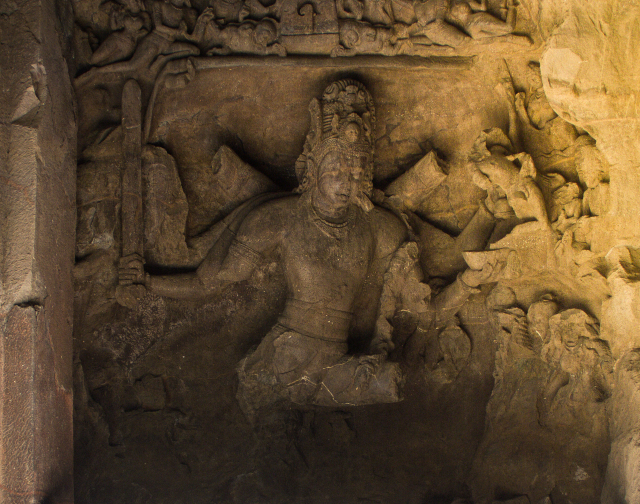We were well aware that Goa is considered "India light" but our main interest was exploring the Portuguese heritage in the small part of Goa with the most intense vestiges of Portuguese culture, Panaji and Goa Velha.
We were staying in Panaji/Pajim at a guest house called Afonso which I must say was the least simpatico place we stayed, it was run with a myriad of petty rules and the Portuguese/Indian owners were really blah. However, it was well situated in the heart of Fontainhas, the oldest part of Panaji with small streets full of Portuguese era buildings from the 18th and 19th centuries, so typical that one could image being in a Portuguese port town like Portimao or Lagos but with an exotic twist; the colours more vivid, the opaque oyster shell shutters more delicate, the air more humid.
Besides the Portuguese architecture there were evidently many Portuguese names surviving on shop fronts and signs, faded and rusty, echoes of a lost colony left behind in 1961.
It seems nowadays the Portuguese language has almost died out, we found one old lady at the Braganza house who happily rattled away in Portuguese describing the past glories of her huge mansion in Chandor, a village near Margao. The 17th century house was stuffed with furniture and artifacts from centuries of collecting, trash and treasure arranged in a haphazard manner in rooms of dilapidated charm. Quite amazing that the collection has survived since the source of the Braganza Menezes Pereira family was vast agricultural estates all confiscated by the Indian state on the departure of the Portuguese in 1961. With little help from the government the family rely on the "voluntary" tips left by visitors, a box inlaid with mother of pearl is indicated and ones tip immediately inspected, our offering was deemed insufficient so another few notes were added until the mistress of the mansion was smiling again and hustled us out with many "obrigadas e boa viagems".
We spent an afternoon in Goa Velha only a short tuc tuc ride from Panaji along the river. The first impression is of the vastness of the churches, simply massive structures and so many of them.
Goa, as the city was known originally was taken from the Sultanate of Bijapur in 1510 by Afonso de Albuquerque the first Portuguese viceroy of India. Jesuits and Franciscans started their missions and work started on building the first huge edifices. Sadly the inquisition arrived in Goa in 1560 and the previous tolerance of Hindu and Muslim religions was disrupted, there must have been great fear and indignation at the destruction of temples and mosques. I can't imagine the feelings of the Hindu and Muslim workers and artisans employed in building these huge symbols of Catholic power. Although the exteriors follow a traditional 16th and 17th century European design for churches, the interiors have distinctive Indian elements, the beautiful carving and features of the saints, the painting of the altarpieces and furniture.
All the churches and monasteries were built in the glory days of Goa but by the 18th century trade was declining due to competition from the Dutch and British, several waves of plague and the silting of the river Mandovi all contributed to the viceroy moving to Panaji, New Goa, in 1759 and finally Goa Velha lost its capital status in 1843
We became quite fond of the Panjim Inn which is still owned by decedents of the founding Portuguese senhor, Francis Assis De Silveria through his two daughters who both married local Goan men.
Mr. Sukhija, the great grandson of the founder, is still to be seen every morning sedately reading the newspaper and drinking his coffee. His son Jack Sukhija now runs the business and has added two other heritage houses as well as an art gallery specializing in Indian artists.
Dinner on the verandah was very pleasant, good typically Goan food.
One morning we took a tuc tuc ride up to the hill behind the town where there is a small community called Altinho. It seems that this was the favoured residential quarter for Portuguese officials, there are haunting abandoned ruins set in wild gardens, once grand villas. One of them has been restored and made into an art centre, Sunaparanta, and café called Bodega run by Vandana Naik, a good place for breakfast with delicious home made cakes and good coffee.
http://www.cafebodegagoa.in/pages/about-us
And last but not least our inevitable visit to the local Khadi bander, a particularly dusty fusty example where I bought some excellent hand woven linen waistcoats for me and Manfred.




























































































 .
.
